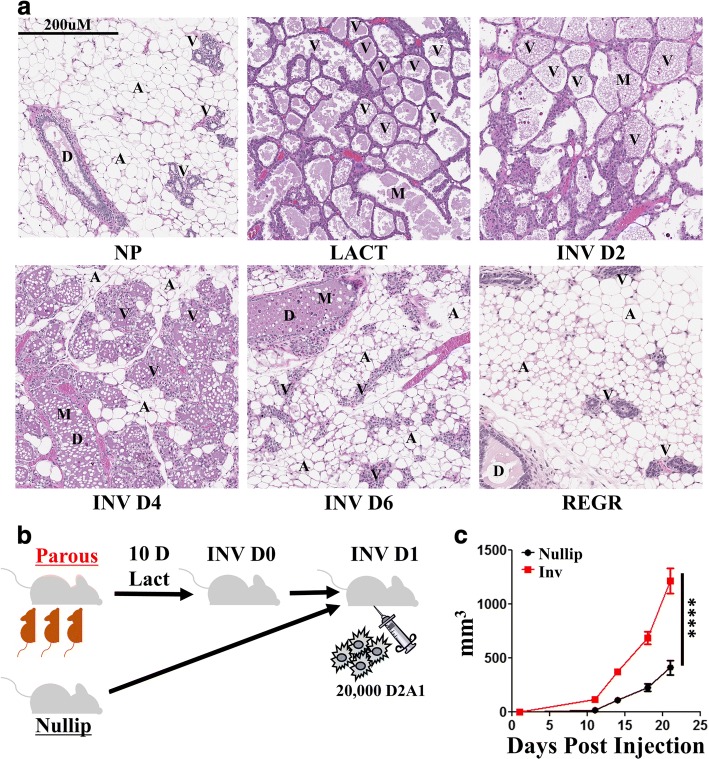Fig. 1.
Weaning-induced mammary gland involution is a dynamic, tissue remodeling process that promotes breast cancer. a H&E sections of Balb/c mouse mammary glands across a reproductive cycle show the presence of ductal (D) and alveolar (V) epithelial structures, adipocytes (A), and milk (M) secretions within luminal spaces from nulliparous (NP), lactation (LACT), involution day two, four and six (INV D2, INV D4, and INV D6) and 6 weeks regressed (REGR) glands. b Groups of age matched Balb/c mice were bred (parous/involution, n = 8) or not (nulliparous, n = 6). Involution cohorts lactated for 10 days and pups removed to initiate synchronous mammary gland involution. One day post-weaning, 20,000 D2A1 syngeneic breast cancer line tumor cells were implanted orthotopically in the 4th mammary gland of involution or nulliparous Balb/c mice. c Tumor growth was monitored for 3 weeks before mice were euthanized for tissue collection and analyses. Determination of statistical differences between NP and INV were based upon two-tailed Student’s t-test comparison with p < 0.0001 (****)

